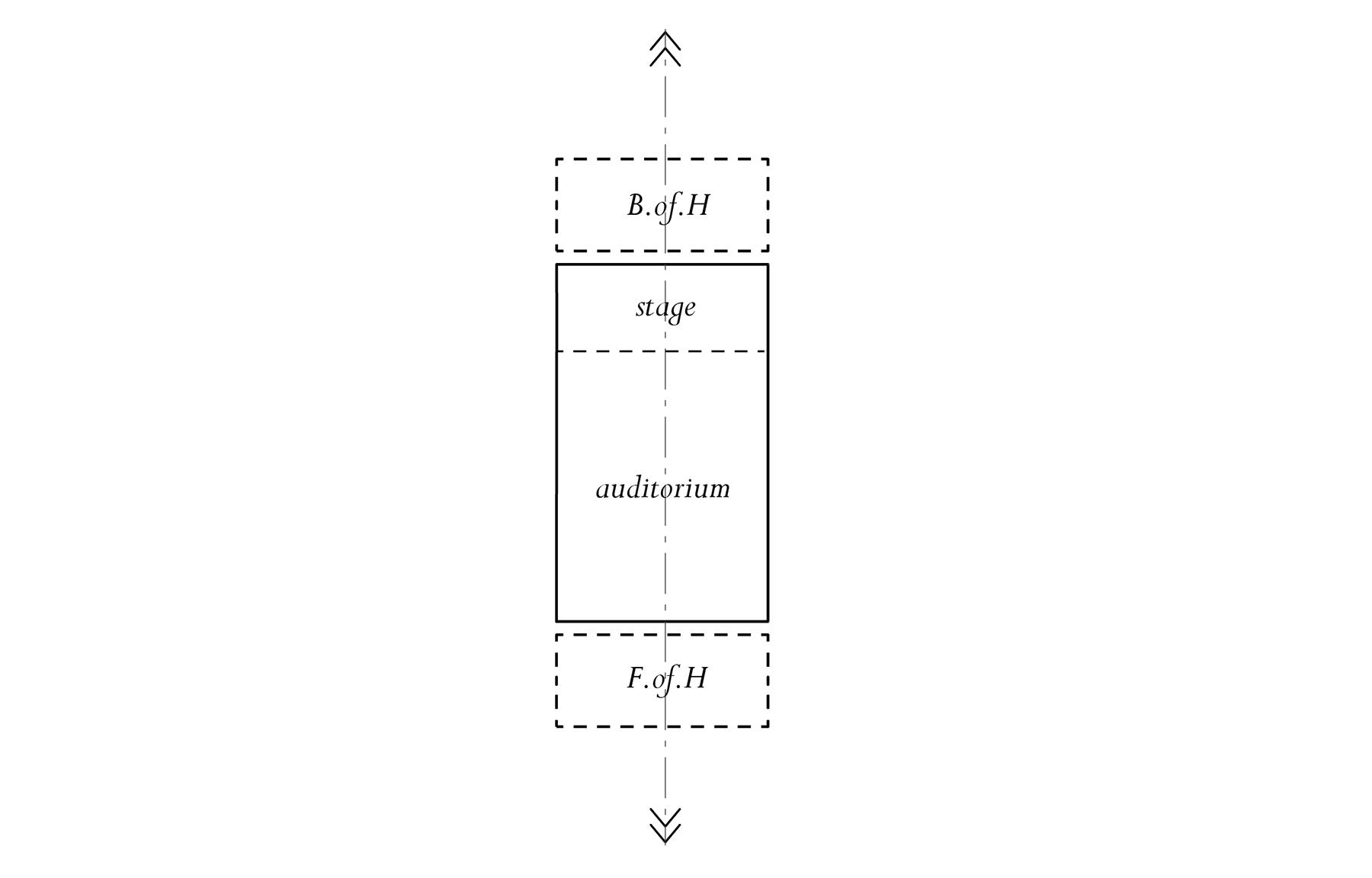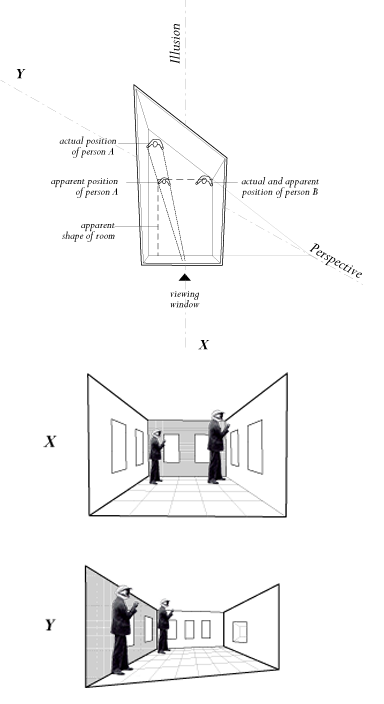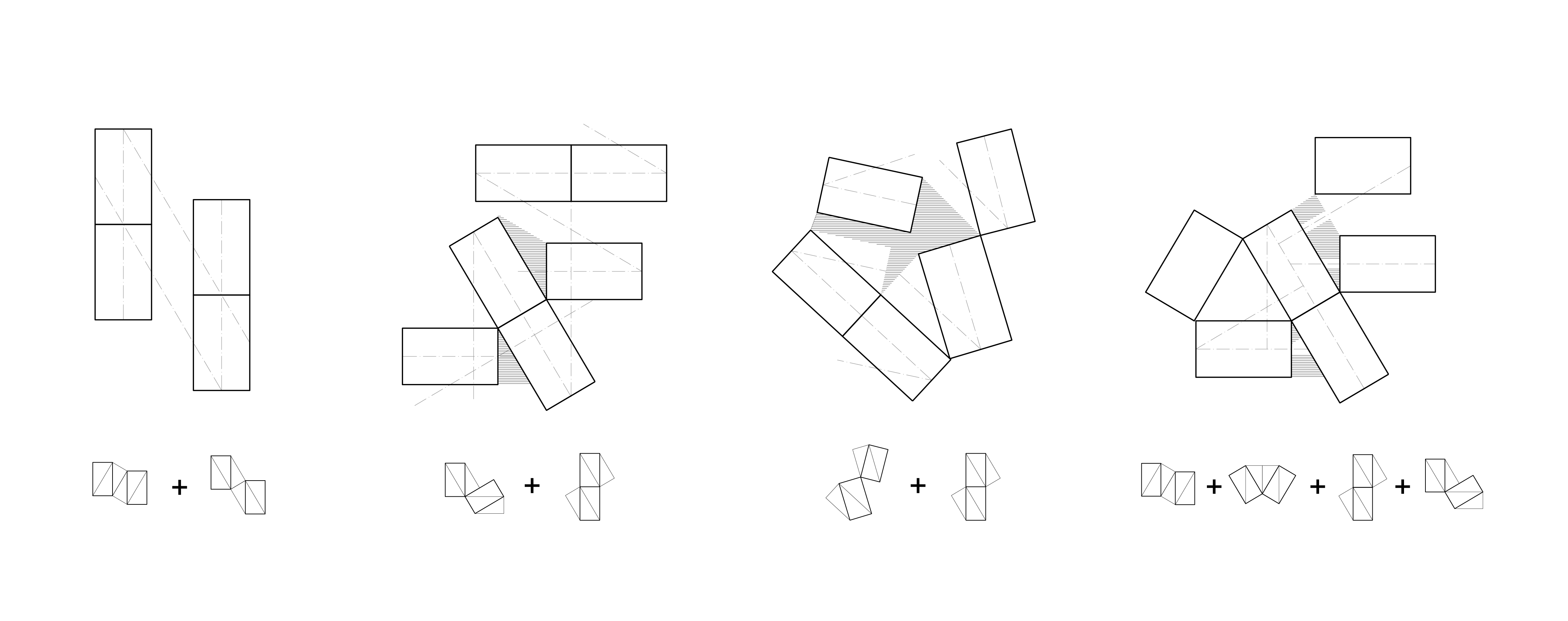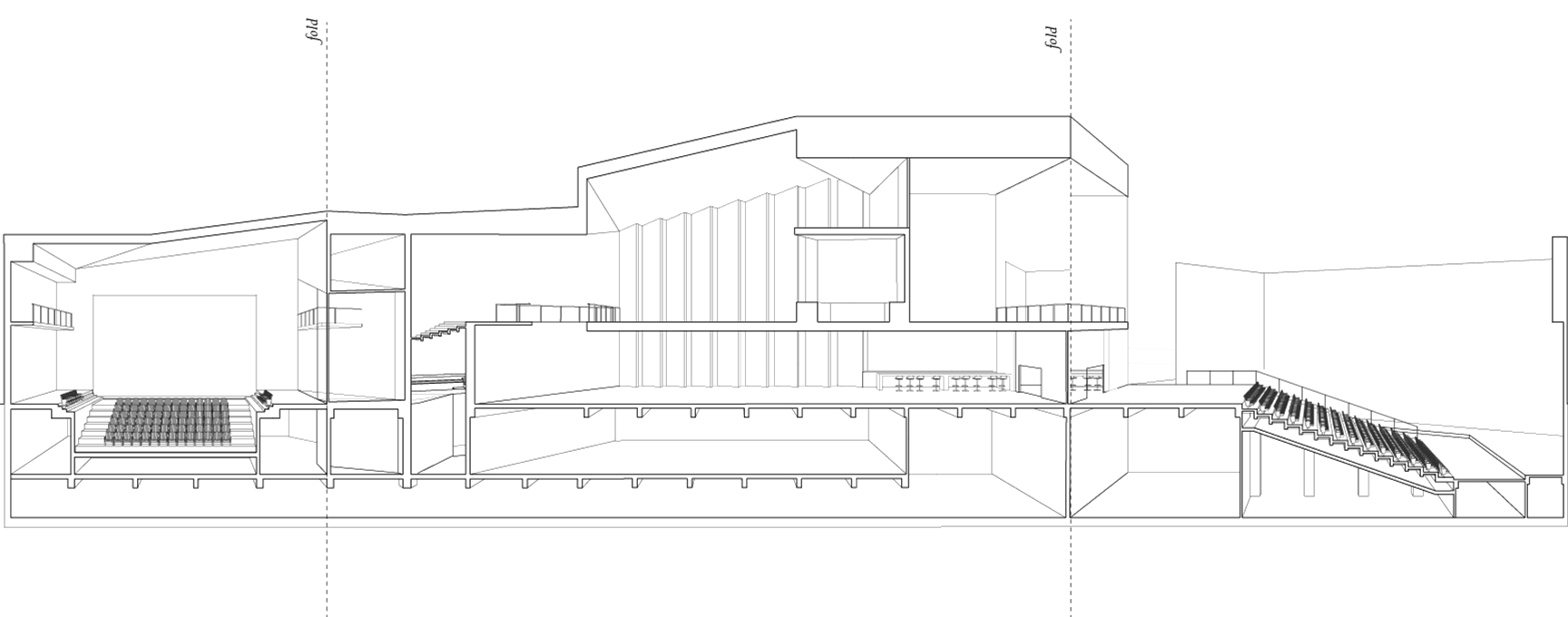
Flicker
Beyond the Frame: Reinvigorating Field of View
Professor: Heather Roberge
Graduate Advanced Topic Studio
M.Arch, UCLA AUD
Since classical antiquity, the theatre has been constructed in bi-lateral symmetry along the perceptual axis between audience and stage. Here the linear spatial sequencing of the theatre typically extends the language of linear perspective with public spaces in the “front of house” and backstage programs behind the stage.
Rather than upsetting this relationship, the project duplicates and distorts the existing typology of the theatre to produce experiences of perceptual play. The trapezoidal plan of the Ames Room is overlayed on the rectilinear plan of the classical theatre. This doubling of the theatre creates a flicker in visual perception between optical illusion and spatial reality. With visual attention directed towards the shared wall of both geometries, the project celebrates the subjectivity of perception.
Through the aggregation of six of these doubles, the buildng uses spatial alignments and adjacencies to construct a series of optically incompatible perceptual couples which obscure and confuse the spatial understanding of the building. This tension between illusionary space and actual space works through visual windows between the lobby, the 750-seat proscenium theatre, the black box theatre, the restaurant, and the amphitheatre. Snapping to specific visual axis the windows, utilize massing strategies and sculpted poche to create highly choreographed views into each theatre in order to promote an illusion of the space quite different that the actuality of the space itself. In this way, force perspective is used in the project to construct two versions of the same theatre through choreographed optical views.
Beyond the Frame: Reinvigorating Field of View
Professor: Heather Roberge
Graduate Advanced Topic Studio
M.Arch, UCLA AUD
Since classical antiquity, the theatre has been constructed in bi-lateral symmetry along the perceptual axis between audience and stage. Here the linear spatial sequencing of the theatre typically extends the language of linear perspective with public spaces in the “front of house” and backstage programs behind the stage.
Rather than upsetting this relationship, the project duplicates and distorts the existing typology of the theatre to produce experiences of perceptual play. The trapezoidal plan of the Ames Room is overlayed on the rectilinear plan of the classical theatre. This doubling of the theatre creates a flicker in visual perception between optical illusion and spatial reality. With visual attention directed towards the shared wall of both geometries, the project celebrates the subjectivity of perception.
Through the aggregation of six of these doubles, the buildng uses spatial alignments and adjacencies to construct a series of optically incompatible perceptual couples which obscure and confuse the spatial understanding of the building. This tension between illusionary space and actual space works through visual windows between the lobby, the 750-seat proscenium theatre, the black box theatre, the restaurant, and the amphitheatre. Snapping to specific visual axis the windows, utilize massing strategies and sculpted poche to create highly choreographed views into each theatre in order to promote an illusion of the space quite different that the actuality of the space itself. In this way, force perspective is used in the project to construct two versions of the same theatre through choreographed optical views.

Trompe L’oeil
The trompe l’oeil, french for “deceive the eye” is commonly known as an art technique that uses realistic 2-dimensional imagery to create an optical illusion of a projected 3-dimensional space.
Forced Perspective
Reciprocal in nature, the technique of forced perspective is used across media disciplines in order to collapse a 3-dimensional reality of objects and force an illusionary relationship between these objects.
The Ames Room
In 1946, drawing from late nineteenth century concepts of modern studies of perception and forced perspective, Adelbert Ames Jr constructed The Ames Room. By distorting the planar geometry of a rectilinear room, Ames was able to drastically alter the perceptible scale of two objects of a similar height, standing in opposite corners. Formally, the room operates as a projection of linear perspective offering an axis of illusion along which the room appears to be rectangular and the collapsed image of a tiny man and a giant are made to appear as reality. However as one moves from this particular vantage point the oblique formal qualities of the room are revealed and the illusion is lost.
The trompe l’oeil, french for “deceive the eye” is commonly known as an art technique that uses realistic 2-dimensional imagery to create an optical illusion of a projected 3-dimensional space.
Forced Perspective
Reciprocal in nature, the technique of forced perspective is used across media disciplines in order to collapse a 3-dimensional reality of objects and force an illusionary relationship between these objects.
The Ames Room
In 1946, drawing from late nineteenth century concepts of modern studies of perception and forced perspective, Adelbert Ames Jr constructed The Ames Room. By distorting the planar geometry of a rectilinear room, Ames was able to drastically alter the perceptible scale of two objects of a similar height, standing in opposite corners. Formally, the room operates as a projection of linear perspective offering an axis of illusion along which the room appears to be rectangular and the collapsed image of a tiny man and a giant are made to appear as reality. However as one moves from this particular vantage point the oblique formal qualities of the room are revealed and the illusion is lost.






